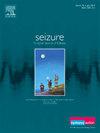Is lamotrigine a teratogen?
IF 2.7
3区 医学
Q2 CLINICAL NEUROLOGY
引用次数: 0
Abstract
Aim
To assess whether lamotrigine (Lamictal), when used in antiseizure medication (ASM) monotherapy, is a teratogen.
Materials/Methods
Analysis of data from 490 LTG monotherapy treated pregnancies and 214 pregnancies in women with epilepsy not exposed to any antiseizure medications during at least the first half of pregnancy.
Results
The LTG-treated and the untreated pregnancies were well matched in nearly all regards apart from ASM exposure. There was a foetal malformation (FM) occurrence rate of 4.49 % in the LTG-exposed pregnancies and 3.27 % in the untreated pregnancies (Risk Ratio = 1.37; 95 % C.I. 0.60, 3.16). Logistic regression produced no evidence that the extent of the LTG-associated malformation occurrence hazard was LTG dose related. However, the malformation-affected body regions tended to differ between the LTG-treated and untreated pregnancies.
Conclusion
The above findings do not reach a statistically significant level (P < 0.05) but, taken overall, they do not necessarily exclude the possibility that LTG may be a weak teratogen. If LTG monotherapy-associated foetal malformation occurrence rates are used as the comparator against which to evaluate the foetal malformation hazards associated with other ASMs, the findings may possibly be open to the risk of falsely reassuring outcomes.
拉莫三嗪是致畸剂吗?
目的:评价拉莫三嗪(Lamictal)在抗癫痫药物(ASM)单药治疗中是否为致畸物。材料/方法:对490例接受LTG单药治疗的妊娠和214例至少在妊娠前半期未接受任何抗癫痫药物治疗的癫痫妇女妊娠的数据进行分析。结果:除了ASM暴露外,ltg治疗组和未治疗组的妊娠几乎在所有方面都匹配良好。ltg暴露组胎儿畸形发生率为4.49%,未暴露组为3.27%(风险比= 1.37;95% (c.i. 0.60, 3.16)。Logistic回归未发现LTG相关畸形发生危害程度与LTG剂量相关的证据。然而,畸形影响的身体区域往往不同于ltg治疗和未治疗的妊娠。结论:上述结果虽未达到统计学显著水平(P < 0.05),但综合考虑,并不一定排除LTG为弱致畸物的可能性。如果将LTG单药治疗相关的胎儿畸形发生率作为比较指标,以评估与其他asm相关的胎儿畸形危害,研究结果可能存在错误可靠结果的风险。
本文章由计算机程序翻译,如有差异,请以英文原文为准。
求助全文
约1分钟内获得全文
求助全文
来源期刊

Seizure-European Journal of Epilepsy
医学-临床神经学
CiteScore
5.60
自引率
6.70%
发文量
231
审稿时长
34 days
期刊介绍:
Seizure - European Journal of Epilepsy is an international journal owned by Epilepsy Action (the largest member led epilepsy organisation in the UK). It provides a forum for papers on all topics related to epilepsy and seizure disorders.
 求助内容:
求助内容: 应助结果提醒方式:
应助结果提醒方式:


